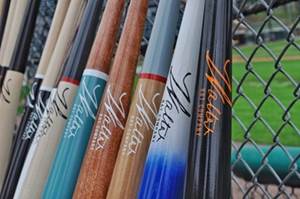What's Our Business?
We’ve heard it ad nauseam: Manufacturing is changing. Well, that’s a big Duh! I think it’s a safe bet that most of us understand change is happening. How to deal with that change is really the question.
We’ve heard it ad nauseam: Manufacturing is changing. Well, that’s a big Duh! I think it’s a safe bet that most of us understand change is happening. How to deal with that change is really the question.
At PMPA’s latest management update conference, I listened to Dr. Kenneth Preiss of the Enterprise Systems Center at Lehigh University discuss this topic for 2 days. He presented some interesting—and I think important—thoughts about manufacturing’s changing role, some of which I’d like to share.
The first question to ask is “what is the nature of my business’s relationship with my customers?” For many years a sufficient answer to this question was “I make good parts for my customer at a fair price.” However, if that’s what we think is the current business relationship between our shops and customers, Dr. Preiss admonishes us to think again.
One of the most fundamental changes in manufacturing is a shift in the commercial value of explicit knowledge to tacit knowledge. Dr. Preiss defines explicit knowledge as things that can be written down such as prints or computer files. A physical product (such as parts) is an expression of explicit knowledge. Think of it as manufacturing know-how. Tacit knowledge is what exists in people’s heads and in the social fabric of a company. It involves cultural compatibility and problem solving capability.
The problem with relying too heavily or exclusively on explicit knowledge is that it’s available to everyone. The democratization of manufacturing technology has made the explicit knowledge of part making virtually universal. And, as we all know too well, increasingly there are foreign economies where just making parts is more competitive than it is here.
It is in tacit knowledge that a competitive advantage for domestic manufacturers resides. The idea is to change a shop’s thinking from that of supplying a customer with parts to becoming involved in the customer’s processes. This requires learning more about where you fit into the customer’s needs structure.
If you simply supply a part to your customers, it’s as easy for them to buy parts overseas as it is for them to buy parts from you. Part are parts. Instead, consider applying your tacit knowledge to help a customer use the parts you make as part of a process solution that solves the customer’s problems. This takes advantage of the cultural compatibility between you and the customer and is impossible to duplicate with explicit knowledge alone.
The central theme of Dr. Preiss’ discussion was to change the thinking of manufacturers from considering themselves suppliers to making themselves virtual partners in the customer’s enterprise. In general, suppliers are interchangeable. If a shop is simply a supplier, it is in constant jeopardy of being underbid or replaced by another supplier.
If the shop can change its relationship from just a supplier of parts to a profit-making problem solver for the customer, that’s a much more secure position. The parts become a platform from which to launch a more service-oriented relationship with the customer.
Now that’s not to say that a shop should replace its manufacturing expertise. It’s the ability to make parts that is the foundation of a shop/customer relationship. What’s being suggested here is to use explicit manufacturing capability where it’s appropriate and enhance it with tacit knowledge when that’s appropriate. It’s simply another arrow in your quiver.
But that’s enough about the theory of tacit and explicit knowledge. Check out the first page in the PMPA section of this issue (page 15), and read about Prince Industries. This company is a real world example of how to do what Dr. Preiss is talking about without losing the manufacturing platform that makes it possible.
Related Content
Video: Why a Production Machine Shop Started a Baseball Bat Company
A 153-year-old manufacturer of precision, metal pins recently started a side business creating custom wooden baseball bats. The reasoning behind establishing this new company is intriguing, as is how it has helped create a stronger bond with the local community.
Read MoreUnderstanding Micro-Milling Machine Technology
Micro-milling can be a companion process to turning-based production machining. This article looks at some of the technologies that go into a micro-milling machine and why they are important to successful operation.
Read MoreWhen a CNC Turn-Mill Doesn’t Turn
A shop in Big Sky Country uses a B-axis multitasking machine to produce complex, prismatic medical parts that require no turning complete from barstock.
Read MorePursuit of Parts Collector Spearheads New Enterprise
While searching for a small parts accumulator for Swiss-type lathes, this machine shop CEO not only found what he was looking for but also discovered how to become a distributor for the unique product.
Read MoreRead Next
A Tooling Workshop Worth a Visit
Marubeni Citizen-Cincom’s tooling and accessory workshop offers a chance to learn more about ancillary devices that can boost machining efficiency and capability.
Read MoreDo You Have Single Points of Failure?
Plans need to be in place before a catastrophic event occurs.
Read MoreSeeing Automated Workpiece Measurement in Real Time
User-friendly inspection software for CNC machining centers was shown at IMTS 2024 monitoring measurements between and after machining while performing SPC based on recorded measurement values.
Read More










.png;maxWidth=300;quality=90)











